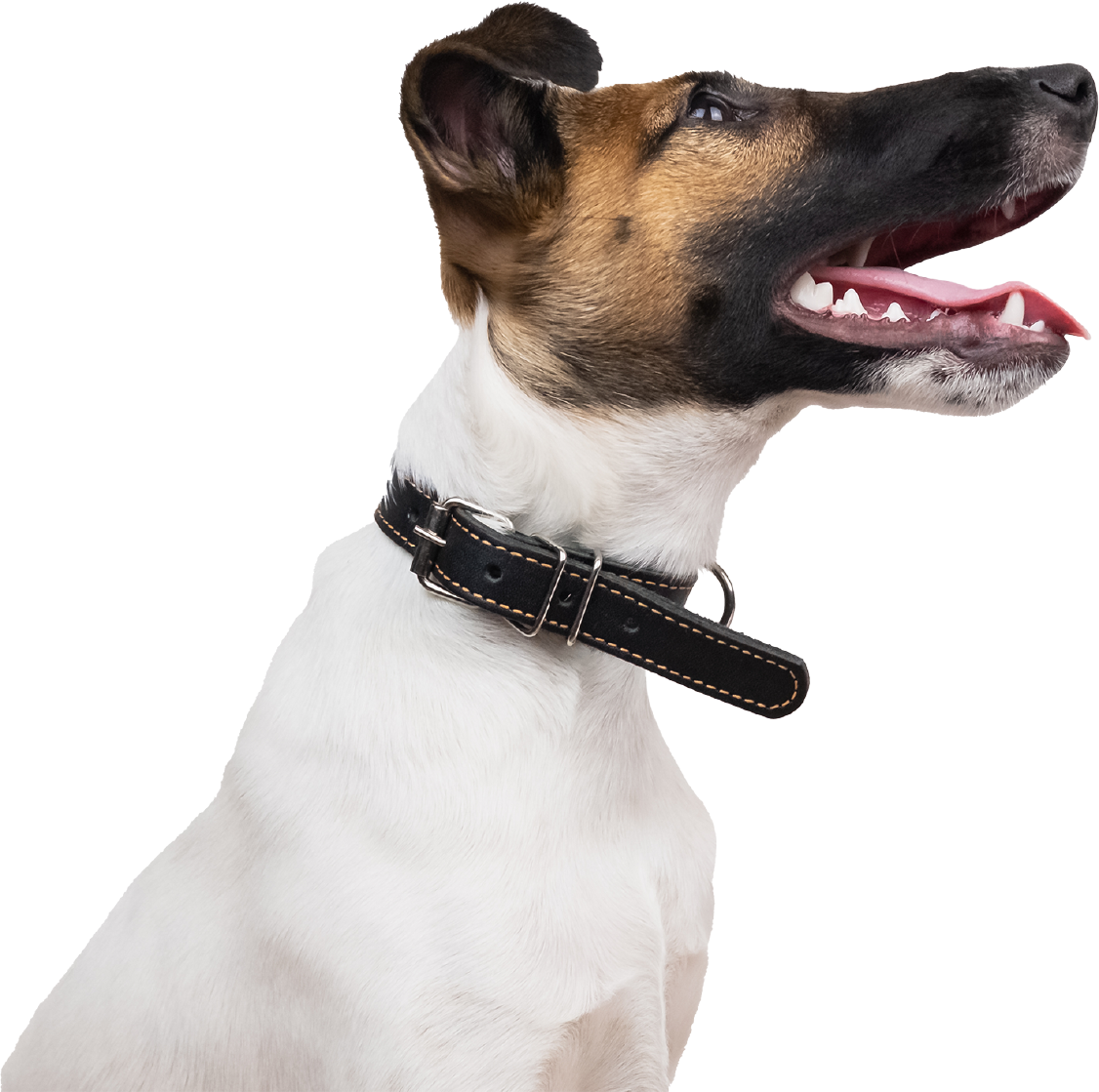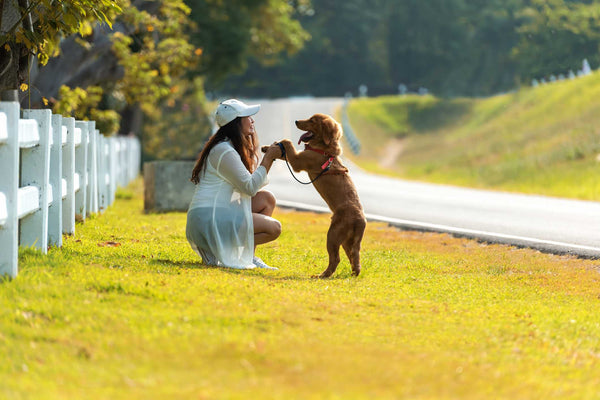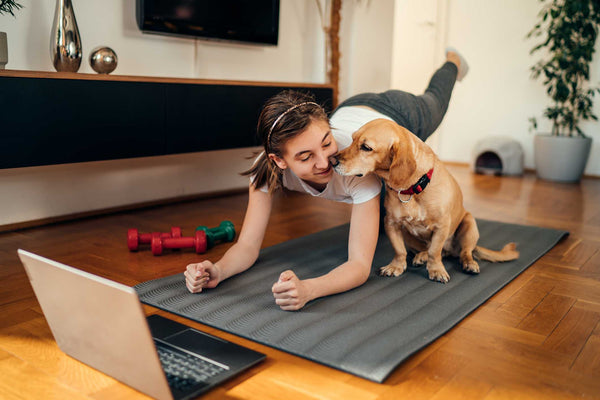7 Tips to Combat Your Dog’s Boredom

Do you ever think your dog might be restless or bored? Chances are you see this happening more in the winter months when your dog is likely cooped up, just like the rest of us in cold weather areas. They aren’t able to engage in all the activities they might when it’s warmer out like beach and dog park trips. They can’t go on their regular long walks or for runs outside when there’s snow and ice coating the roads and sidewalks, especially if frostbite or hypothermia is a concern. But sometimes our dogs simply have to be left alone for longer periods of time regardless of the weather, and unfortunately, we cannot be there to keep them entertained and engaged all day. So, we’ve got some tips for you to combat your dog’s boredom when it’s cold or if you’re busy with work and other tasks that keep them from the full scope of their stimulating activities.
First, before we get into the possibilities to eliminate a dog’s boredom, let’s go over the signs that would indicate they might be bored in the first place. If your dog is experiencing boredom, they might try to create their own entertainment, and typically what they consider fun might be what we consider destructive. They might chew on household items like furniture, shoes, and electronics to pass the time. If you find any big messes from your dog when you get home like tipped trash cans, torn pillows, ripped papers, and so on then chances are they were bored. The possibility that they were experiencing separation anxiety or stress is also something to be aware of because sometimes the indicators of distress and boredom will be the same when you’re out of the house. Evaluate the situation to establish the cause so you can be prepared for next time, and if you are unsure what they are trying to tell you consult with your vet or a trainer about the behavior.
Now that you have an idea of what signals to look for in a bored dog, let’s talk about how to combat that boredom!
- Physical Activity
A tired dog is less likely to get into any shenanigans when you’re not home. If possible, try to ensure your dog gets a good amount of exercise (dependent on their breed, weight, and age) before they’re going to be left alone for long periods of time. If you’re unsure how much daily exercise your dog needs, then consult with your vet to implement a proper physical activity plan. A dog will usually give you indicators when they are becoming too tired and have had enough exercise—they might yawn a lot, become irritable, or they may start ignoring your commands. Once they’re exercised and satisfied, they should be able to rest easier for several hours. Sometimes exercise is more difficult to implement during cold weather, so in that case work out some tiring games that you can play in the house so that even if your dog is not running around in the outdoors, they will still achieve the physical activity they need.
- Mental Enrichment
Exercising the brain is just as important as exercising the body, in the same way it is for humans. When you are mentally stimulated you become more tired. Remember taking those big tests in school or studying for hours until you desperately needed a nap? A dog is the same way. If they are given mental enrichment tasks they will tire more easily and be able to rest with a feeling of accomplishment. Mental enrichment activities can include nose games where your dog has to track down treats or other items by scent, stuffed and frozen Kongs where they have to work to get out peanut butter and other food items, obstacle courses, food dispensing toys, puzzle toys, and even a designated digging area.
- Training
Training is another form of mental enrichment, but it usually requires your attention and mental stimulation as well. Training can be a great way to bond with your dog while also producing some very helpful results in terms of behavior, recall, and even fun and impressive tricks! It also happens to be a bonus that training keeps your dog from boredom and will allow them to feel satisfied and fulfilled when it’s time to relax. Dogs enjoy having tasks and jobs to do and when they catch on while learning something new, they can feel great joy and pride. You can sign up for training classes whether they be locally or virtually, or take to watching helpful training videos, or even have a trainer work with your dog on a regular basis. Implementing some quality training time with your pup daily will bring you both a sense of accomplishment, and that’s fun for everyone!
- Alternate Feeding Routines
Making a game out of your dog’s mealtime can keep them from getting bored. A dog’s predisposition is to work for their food, so they actually can get a lot of enjoyment out of not having it placed right in front of them in an easy access bowl. There are slow feeder bowls, food-releasing puzzle toys, Kongs, and food mats. You can also let your dog hunt around the backyard for their food if you hide it in different places. Instead of inhaling their food in a couple minutes, this method of feeding can keep them occupied during mealtime for much longer and they will be stimulated at the same time.
- Socializing
Keeping your dog socialized is very important, not just for boredom, but so they feel more comfortable and confident in the world as a whole. If a dog never leaves their house and is never exposed to other people, dogs, sounds, smells, and so on then they will inevitably become frightened, and even aggressive in some cases. Keeping your dog open to new experiences on a regular basis is great for many reasons, and socializing is not just for puppies but for dogs of all ages. Try taking your dog for walks around the neighborhood where they can meet people, or even other dogs if they are comfortable with these situations. You can bring your dog with you to outdoor dining areas where they can take in new sights and smells. Try organizing doggy playdates if they are with dogs whose temperament will be a good fit with your dog. Dog parks are always a great form of socialization as long as safety and caution are used. Our dogs are social creatures, and we need to remember that to meet their needs and combat that boredom!
- Work
Many dogs were bred for specific jobs, so it’s in their DNA to be geared toward certain tasks. They can work at tasks from pulling, to guarding, to herding. A great way to keep boredom away is to give your dog a task to do, which will fulfill the need they might feel to have a job. For instance, golden retrievers were bred to retrieve hunted waterfowl, so they have a natural tendency to not just retrieve, but they also gravitate toward water. A dog of this breed would benefit from retrieving, swimming, digging, and diving hobbies. So, if you don’t already know what your dog’s genetic tendency is based on their breed, try to find out what they were bred for and give them tasks related to this.
- Seek Outside Help
Sometimes leaving our dogs for much longer than we’d like is simply the only option. Providing challenging games, Kongs, and chews are all great possibilities, but if your dog is still experiencing boredom when you’re gone for long periods you may want to consider hiring a dog walker who can get your dog some exercise, or even just drop in to give them attention and playtime. Doggy daycare is also an option where your dog can enjoy playtime with other dogs under appropriate supervision. Always ensure that your dog will be comfortable with whoever they are left with and any new environment they may enter. Outside help is a great way to keep them engaged, help them socialize, and exercise!
If you think your dog might be experiencing boredom, look for the signals we covered in the beginning of this post and think of how you might go about implementing new routines and techniques into their lives to keep them fulfilled, exercised in body and mind, and above all—happy!
 Shay Siegel is a young adult author, freelance writer, and editor from Long Island, NY. She has a BA from Tulane University and an MFA in Writing from Sarah Lawrence College. Always a lover of animals, Shay had several cats growing up. She's now a dog mom to the snuggliest rescue pit bull, Bernie. She enjoys writing on a variety of topics and sharing her love and knowledge of animals with others!
Shay Siegel is a young adult author, freelance writer, and editor from Long Island, NY. She has a BA from Tulane University and an MFA in Writing from Sarah Lawrence College. Always a lover of animals, Shay had several cats growing up. She's now a dog mom to the snuggliest rescue pit bull, Bernie. She enjoys writing on a variety of topics and sharing her love and knowledge of animals with others!

Ready to gain some healthy superpowers?
Looking to support your dogs immune system or digestive health? Need joint or calming support?
Let Waggy Show you the way

